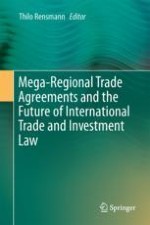2017 | OriginalPaper | Buchkapitel
The Brave New (American) World of International Investment Law: Substantive Investment Protection Standards in Mega-Regionals
verfasst von : Stephan W. Schill, Heather L. Bray
Erschienen in: Mega-Regional Trade Agreements
Aktivieren Sie unsere intelligente Suche, um passende Fachinhalte oder Patente zu finden.
Wählen Sie Textabschnitte aus um mit Künstlicher Intelligenz passenden Patente zu finden. powered by
Markieren Sie Textabschnitte, um KI-gestützt weitere passende Inhalte zu finden. powered by
